Postsecondary institutions can capitalize on existing national data sources to obtain information on prison education programs (PEP) and students. This resource provides a brief overview of the following data sources:
Postsecondary institutions can capitalize on existing national data sources to obtain information on prison education programs (PEP) and students. This resource provides a brief overview of the following data sources:
This brief from the National Skills Coalition
The Second Chance Pell Experimental Sites Initiative, launched by the U.S. Department of Education in 2015, provides need-based Pell Grants to people in state and federal prisons. Second Chance Pell has active partnerships with 64 colleges that teach in 28 states. The schools were selected in June 2016 for the initiative, which examines whether expanding access to financial aid increases incarcerated adults’ participation in educational opportunities.
Access to education is in high demand among the incarcerated population. There are clear benefits to students who are incarcerated, their families and communities, public safety, and safety inside prisons. Yet the gap in educational aspirations and participation has been largely driven by a lack of capacity due to limited funding.
Access to education is in high demand among the incarcerated population. There are clear benefits to students who are incarcerated, their families and communities, public safety, and safety inside prisons. Yet the gap in educational aspirations and participation has been largely driven by a lack of capacity due to limited funding.
Access to education is in high demand among the incarcerated population. There are clear benefits to students who are incarcerated, their families and communities, public safety, and safety inside prisons. Yet the gap in educational aspirations and participation has been largely driven by a lack of capacity due to limited funding.
Access to education is in high demand among the incarcerated population. There are clear benefits to students who are incarcerated, their families and communities, public safety, and safety inside prisons. Yet the gap in educational aspirations and participation has been largely driven by a lack of capacity due to limited funding.
Access to education is in high demand among the incarcerated population. There are clear benefits to students who are incarcerated, their families and communities, public safety, and safety inside prisons. Yet the gap in educational aspirations and participation has been largely driven by a lack of capacity due to limited funding.
Access to education is in high demand among the incarcerated population. There are clear benefits to students who are incarcerated, their families and communities, public safety, and safety inside prisons. Yet the gap in educational aspirations and participation has been largely driven by a lack of capacity due to limited funding.



